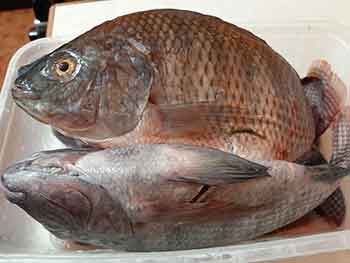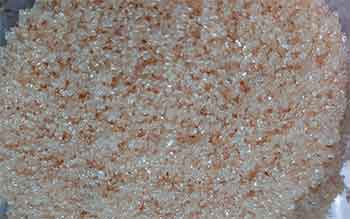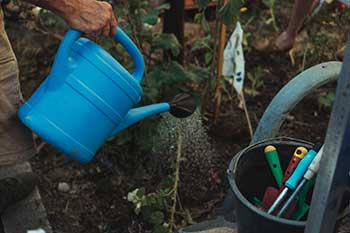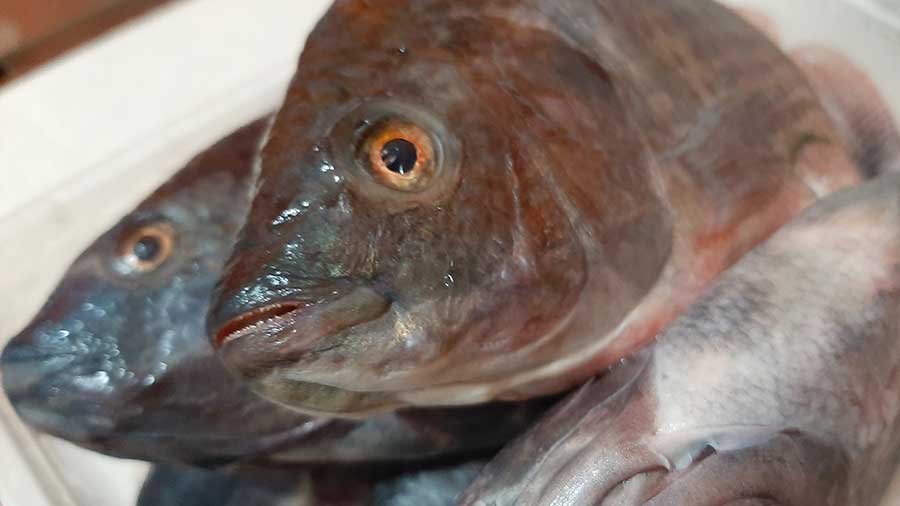One of the most important aspects of using organic fertilizers in gardening is converting kitchen wastes into rich sources of nutrients. In my previous articles, I have talked about making organic fertilizers from various fruit peels, grass clippings, coffee grounds, and so much more.
There are so many organic sources that can be made into fertilizers, and one of the sources is fish scraps. I have written another article about the benefits of using fermented fish fertilizer. You may read it here.
In making a homemade fermented fish fertilizer, you can use the fish head and fish guts that otherwise might have been sent to the disposal bins.
Here’s What You Need
- Fish Scraps (guts, head, gills, etc.)
- Knife
- Molasses (alternatively, you can use brown sugar)
- Plastic container with lid or cap
- Ladle
- Food Processor or Blender (optional)
That’s it!
For the fish scraps, any fish will do. It doesn’t really matter if it’s a saltwater or freshwater fish. In some markets, they actually just give these away for free. All you need to do is ask.

The molasses is used as the food for the beneficial microorganisms that will break down the fish scraps. Brown sugar is a good substitute for molasses if it is not available. Don’t use white sugar as it is already processed chemically.
The amount of molasses to be used depends on your fish scraps. The ideal ratio is 1:1. For example: for every 1 kilo of fish scraps, use 1 kilo of molasses.
Lastly, about the container, it is good to use a wide-mouth container. The size depends on the number of fish scraps you will be using. The ladle will be used to mix the fish and molasses concoction.
Step-by-Step Process in Making the Fermented Fish Fertilizer
Here are the seven steps in making the homemade fermented fish fertilizer
- Clean the fish scraps with water
- Chop the fish scraps into small sizes
- Place the chopped fish scraps in a container
- Add the molasses
- Mix the concoction thoroughly
- Seal the container tightly
- Store the concoction in a dry, shaded area
Step 1. Clean the fish scraps with water. Gather all the fish guts in a clean container. Rinsing it with running water will do. The last thing we want is for maggots to appear because the fish guts were not cleaned. To be on the safe side, it is best to use fresh fish parts.
This ensures that flies and other insects have no time to lay their eggs on the fish flesh.
Step 2. Chop the fish scraps into small sizes. Alternatively, you can use a food processor or blender to achieve a finer texture. The smaller the fish parts, the faster the fermentation process. If you don’t have the equipment, small thin slices will do.

Step 3. Place the chopped fish scraps in a container. Make sure that your container can be sealed tightly with a lid. It is also important that your concoction can fill up no more than half of your container. The extra air space will help in preventing the pressure build-up inside the container.
The fermentation process will produce gases that will increase pressure inside the container.

Step 4. Add the molasses. Again, the proper ratio is 1:1. For example, for every 1 kilogram of fish, add 1 kilogram of molasses. Any commercial molasses will do, such as the Organic Blackstrap molasses, Raw Cane molasses, or Brer Rabbit Full Flavor molasses.
Step 5 Mix the concoction thoroughly. Mix thoroughly for about 5 minutes. Be sure to use a clean ladle or stick in mixing so you won’t introduce harmful bacteria into the mixture. Harmful bacteria can spread quickly and will foul your concoction. If you are using brown sugar, make sure that the fish scraps are completely soaked in sugar.

Step 6. Seal the container tightly. Seal the container tightly. We want to have an anaerobic fermentation process. Meaning, the entire process will not involve air. We also need to seal it so that flies and insects cannot lay their eggs in our concoction.
Step 7. Store the concoction in a dry, shaded area. Make sure it is away from direct sunlight. I just store it under my kitchen sink.
Make sure to open the container and mix your concoction every other day. The microbes in the concoction release gases during the fermentation process. Pressure will build up if you do not let the gasses out. You don’t want the container to explode. Mixing the concoction is also important so that organic matter is broken down uniformly.
That’s it. For best results, you need to give the fermentation process a month to produce a potent nitrogen-rich fertilizer. Although, in 2 weeks you will already see that it has liquefied already.
Harvesting the Fermented Fish Fertilizer
After a month, you are now ready to harvest your liquid fertilizer. You will know if the process was successful just by its smell. Make sure it doesn’t have a foul smell to it.
To harvest your fermented fish fertilizer, simply filter out the remaining solid particles. You may use a cloth or a strainer and transfer all the liquid to a clean container. The remaining solid particles can be added to your compost.
If you don’t have a pile of compost, simply sprinkle them on the soil around the plant. This process is called topdressing. Because molasses is a natural preservative, you can use this fertilizer for up to a year. Just make sure to keep it in a clean container to avoid contaminants.
Also, remember that the fermentation process may still be ongoing. Don’t try to close the lid tightly because the microbes may still be releasing gasses which could build up pressure inside the container.
It is good to open the lid for a few seconds to let the gases out. Always store it in a cool, dry place.
Since molasses is a natural preservative, you can keep this fertilizer for up to a year.
How to Apply the Fermented Fish Fertilizer
The best way to apply the fish fertilizer to your plants is to drench or water your plants with it. But it has to be diluted first.

The proper ratio is 20 ml of fermented fish fertilizer per 1 liter of water. This is roughly 2 tablespoons per liter of water. Mix thoroughly before drenching. Drench your plants twice a week. This fertilizer is rich in nitrogen so it is best to use it in the vegetative stage of the plants. This is the stage when plants are just beginning to grow leaves.
Do not use this fertilizer to spray your plants. The fermented fish fertilizer contains oil. The oil may stick to the leaves which causes them to burn under the sun. The oil also covers the stomata which may hinder nutrient absorption and air circulation.










